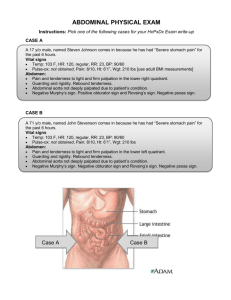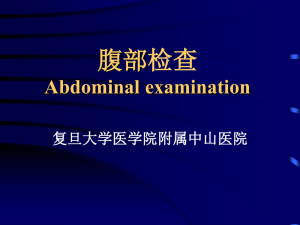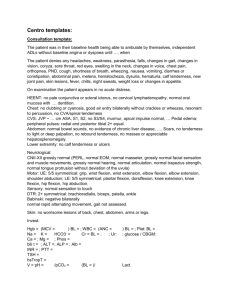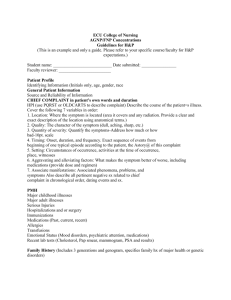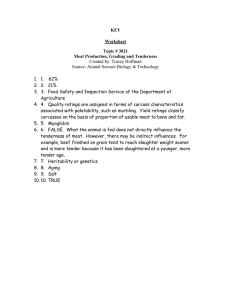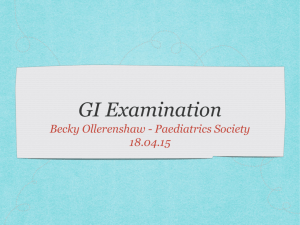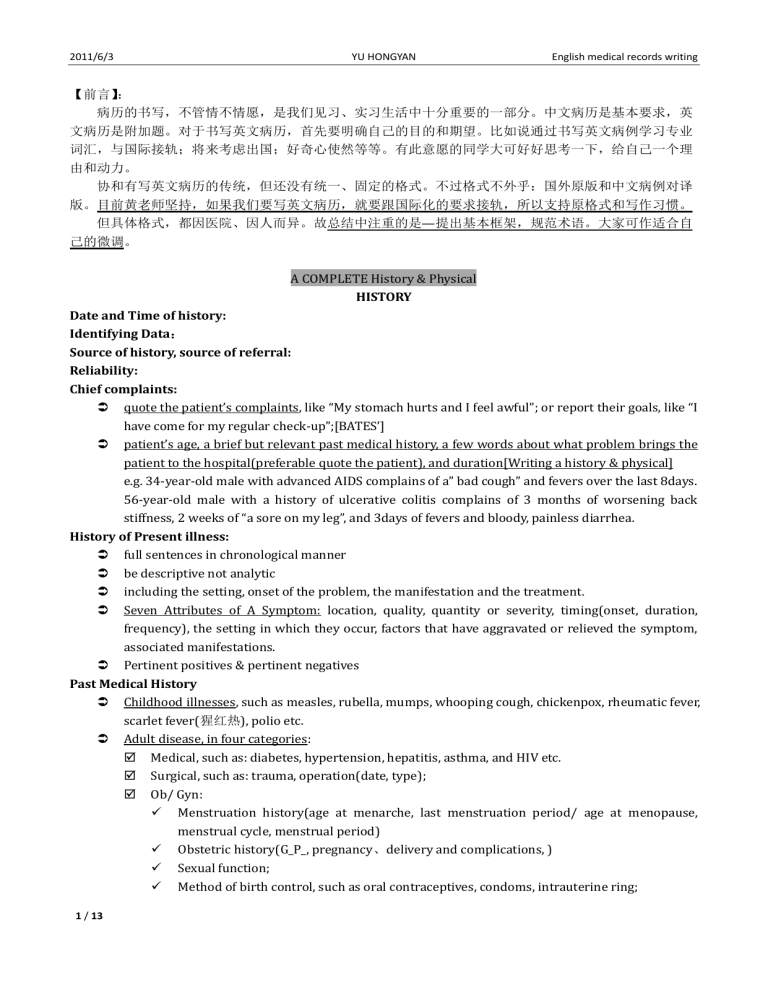
2011/6/3 YU HONGYAN English medical records writing 【前言】 : 病历的书写,不管情不情愿,是我们见习、实习生活中十分重要的一部分。中文病历是基本要求,英 文病历是附加题。对于书写英文病历,首先要明确自己的目的和期望。比如说通过书写英文病例学习专业 词汇,与国际接轨;将来考虑出国;好奇心使然等等。有此意愿的同学大可好好思考一下,给自己一个理 由和动力。 协和有写英文病历的传统,但还没有统一、固定的格式。不过格式不外乎:国外原版和中文病例对译 版。目前黄老师坚持,如果我们要写英文病历,就要跟国际化的要求接轨,所以支持原格式和写作习惯。 但具体格式,都因医院、因人而异。故总结中注重的是—提出基本框架,规范术语。大家可作适合自 己的微调。 A COMPLETE History & Physical HISTORY Date and Time of history: Identifying Data: Source of history, source of referral: Reliability: Chief complaints: quote the patient’s complaints, like “My stomach hurts and I feel awful”; or report their goals, like “I have come for my regular check-up”;[BATES’] patient’s age, a brief but relevant past medical history, a few words about what problem brings the patient to the hospital(preferable quote the patient), and duration[Writing a history & physical] e.g. 34-year-old male with advanced AIDS complains of a” bad cough” and fevers over the last 8days. 56-year-old male with a history of ulcerative colitis complains of 3 months of worsening back stiffness, 2 weeks of “a sore on my leg”, and 3days of fevers and bloody, painless diarrhea. History of Present illness: full sentences in chronological manner be descriptive not analytic including the setting, onset of the problem, the manifestation and the treatment. Seven Attributes of A Symptom: location, quality, quantity or severity, timing(onset, duration, frequency), the setting in which they occur, factors that have aggravated or relieved the symptom, associated manifestations. Pertinent positives & pertinent negatives Past Medical History Childhood illnesses, such as measles, rubella, mumps, whooping cough, chickenpox, rheumatic fever, scarlet fever(猩红热), polio etc. Adult disease, in four categories: Medical, such as: diabetes, hypertension, hepatitis, asthma, and HIV etc. Surgical, such as: trauma, operation(date, type); Ob/ Gyn: Menstruation history(age at menarche, last menstruation period/ age at menopause, menstrual cycle, menstrual period) Obstetric history(G_P_, pregnancy、delivery and complications, ) Sexual function; Method of birth control, such as oral contraceptives, condoms, intrauterine ring; 1 / 13 2011/6/3 YU HONGYAN English medical records writing Psychiatric; Health maintenance Immunization(history and recent immunization); Screening test, such as tuberculin test, Pap smear, mammogram, stool test for occult blood, cholesterol test etc. Medication: name, dose, route of administration, interval. Note for recent cessation or change; Allergy: List the substance and the reaction. Allergy vs intolerance; NOTE: 药物过敏史与烟酒违禁药物使用 分开。关于药物史和过敏史的位置,一共可以出现在两个地方:现 病史,药物、过敏史。关于烟酒违禁药物使用,可以出现在现病史和个人史中。 英文病历中现病史尽量详尽,如果相关,都应该放入现病史中。 Family History List or diagram each immediate relative (age, health, major illness or cause of death). Similar condition among family members; Presence or not: Infectious disease, such as hepatitis, tuberculosis, STD; Complex disease with a hereditary trend, such as HTN, DM, CAD, elevated cholesterol level, stroke, cancer(specify type), arthritis, asthma, headache, seizure, mental illness, allergies etc. Personal and Social History:[written in fragments] Important life experiences in chronological manner: Birth, growth and development, education level(military experience), job history(with or without radiation or toxin contatct), retirement; sexual and Marital history; Source of stress, religious affiliation and spiritual beliefs; Tobacco(pack per year)/alcohol/drug(illicit) abuse: Lifestyle habits: Exercise and diet-- Food intolerance Safety measures such as use of seat belts, bicycle helmets, sunblock etc. Activities of daily living(ADLs), especially important in elderly patients. Review of Systems(ROS) 2 / 13 2011/6/3 YU HONGYAN English medical records writing NOTE:系统回顾中描述的是近期出现或尚处于活动期的疾病或症状,而非很久以前发生的。 它的目的是尽 量详尽和全面,避免漏掉与现病不相关而忽视的症状、疾病。本部分明确的任何问题,都需要在小结和诊 疗计划中作进一步的阐述。 在 ROS 中明确的问题,与现病相关的应放在现病史,既往重大健康事件应放在既往史。 General: Usual weight, recent weight change. Weakness, fatigue, or fever. Skin: dryness or sweating; changes in color; (regional)Rashes, lumps(肿块), sores, itching; changes in size or color of moles(痣); changes in hair or nails; Head, Eyes, Ears, Nose, Throat (HEENT): Head: Headache, dizziness, lightheadedness, head injury Eyes: Visual acuity(视力, glasses or contact lenses, last examination) , visual fields[spots(点), specks(斑)], double or blurred vision, flashing lights, pain, redness, excessive tearing; history of glaucoma, cataracts; Ears: hearing(excellent or impaired, hearing aids ?), tinnitus(耳鸣), vertigo(眩晕), earaches(耳痛), infection, discharge; Nose and sinuses:; nasal stuffiness(不通气), discharge, or itching, nosebleeds; Frequent colds, hay fever; sinus trouble(tenderness); Throat (or mouth and pharynx): gums( bleeding gums); teeth[dentures(牙托), if any, and how they fit], last dental examination; sore tongue; dry mouth; frequent sore throats; hoarseness(声嘶); Neck: lumps; pain, or stiffness in the neck; goiter; Breasts: Lumps, pain, or discomfort; nipple discharge; self-examination practices; Respiratory: Cough, sputum (color, quantity), hemoptysis, dyspnea, wheezing. Last chest x-ray. History of asthma, bronchitis, emphysema, pneumonia, and tuberculosis, pleurisy. Cardiovascular: palpitations, chest pain or discomfort, dyspnea, cyanosis, orthopnea(端坐呼吸), paroxysmal nocturnal dyspnea(夜间阵发性呼吸困难),lower extremities edema, syncope. Positive results of past electrocardiograms or other cardiovascular tests. History of high blood pressure, rheumatic fever, heart murmurs; Gastrointestinal: anorexia (loss of appetite), trouble swallowing, heartburn, excessive belching(嗳气), nausea, vomiting, hematemesis, Abdominal pain/distension, bloating(胀气), diarrhea, constipation, change of bowel movements, stool color[ black or tarry stools(柏油样便)] and size, change in bowel habits, pain with defecation, rectal bleeding , hemorrhoids. Jaundice, itching. Urinary: Frequency and urgency of urination, odynuria, incontinence or dysuria(排尿困难)[ in males, reduced caliber or force of the urinary stream, hesitancy, dribbling(细流)], kidney or flank pain, hematuria, pyuria(脓尿), chyluria(乳糜尿), polyuria or oliguria, anuria, nocturia(夜尿增多). History of kidney stones, urinary infections, ureteral colic(输尿管绞痛), suprapubic pain. Genital: Male: Hernias. Discharge from or sores on the penis; testicular pain or masses; scrotal pain or swelling. Sexual preference, interest, function, satisfaction, birth control methods(condom use), and problems. History of sexually transmitted diseases, exposure to HIV infection and their treatments. Female: Vaginal discharge, itching, sores, lumps. Age at menarche; regularity, frequency, and duration of periods; amount of bleeding; bleeding between periods or after intercourse; last menstrual period; dysmenorrhea(痛经); premenstrual tension. Age at menopause, menopausal symptoms, postmenopausal bleeding. [If the patient was 3 / 13 2011/6/3 YU HONGYAN English medical records writing born before 1971, exposure to diethylstilbestrol (DES)(己烯雌酚) from maternal use during pregnancy (linked to cervical carcinoma)]. Sexual preference, interest, function, satisfaction, birth control methods, any problems, including dyspareunia(交媾困难). Number of pregnancies, number and type of deliveries, number of abortions (spontaneous and induced), complications of pregnancy. History of sexually transmitted diseases, exposure to HIV infection and their treatments. Peripheral vascular: Intermittent claudication, leg cramps; varicose veins, past clots in the veins; swelling in calves(腓肠), legs, or feet; regional swelling with redness or tenderness; color change in fingertips or toes during cold weather. Musculoskeletal: Muscle or joint redness, swelling, pain, stiffness, weakness, or limitation of motion or activity. If present, describe location of affected joints or muscles, timing of symptoms (e.g. morning or evening), duration. History of trauma, arthritis, gout. Presence of muscle atrophy, joint/vertebral deformity. Psychiatric: mood disorder(depression, anxiety, nervousness, tension, elation); disorientation, delirium, hallucination; history of psychiatric disorder, suicide attempts, if relevant. Neurologic: Changes in mood, speech; changes in orientation, attention, memory, insight, or judgment; headache, dizziness(头晕), fainting(晕厥), vertigo(眩晕), blackouts(一过性黑矇), weakness; seizures; paralysis and muscular atrophy; numbness or loss of sensation, tingling(麻刺感) or “pins and needles”[hyperesthesia(过敏), dysesthesia(倒错), hyperpathia(过度), paresthesia(异常)]; tremors or other involuntary movements. Hematologic: Anemia(pallor, dizziness, fatigue), easy bruising or bleeding, past transfusions and transfusion reactions. Endocrine: developmental malformations, build(obese, or thin), stature(tall or short); excessive thirst or hunger, heat or cold intolerance, excessive sweating, tremor, polydipsia(多饮), polyphagia(多食), polyuria; (hyper-hypo) pigmentation, abnormal hair distribution. PHYSICAL EXAMINATION [fragments] General survey: the patient’s general state of health(cachectic, good), any sign of distress(cardiac/pulmonary, pain, anxiety or depression), height, weight, build, and sexual development; the patient’s facial expressions and manner, and reactions to persons and things in the environment; the patient’s manner of speaking and note the state of awareness or level of consciousness; Note posture(orthopnea), motor activity, and gait; dress, grooming(修饰), and personal hygiene; any odors of the body or breath(alcohol or fruity odor). Vital Signs: BP(standing or supine, left or right arm), HR and Rhythm(regular or arrhythmic), RR, Temperature(oral or axilla). Ht(Height), Wt(weight), calculated BMI. Skin: color(normal, increased or loss of pigmentation, pallor, redness, cyanosis, yellowing); moisture(dryness, sweating, oiliness); temperature(generalized & regional-red areas), texture(roughness and smoothness), flexibility, lesions[macule( 斑), papule(丘疹), vesicle(水泡), nevus(mole痣), 7 attributes], pressure sores, crepitus(捻发音); change in hair(quantity, distribution and texture) or nails(color, shape, lesions); HEENT(Head, eye, ear, nose, throat): Head: hair(quantity, distribution, texture, pattern of loss, if any); scalp[scaliness(多鳞屑), lumps, nevus etc.]; skull(size, contour, deformity, depression, lumps, tenderness); face( skin, facial expression, asymmetry, involuntary movements, edema and masses); 4 / 13 2011/6/3 YU HONGYAN English medical records writing Eye: visual acuity[myopia(近视), presbyopia(远视)]; visual fields(hemianopsia, blind spot); position and alignment of the eyes[exophthalmos, enophthalmos( 眼 球 下 陷 )], eyebrow(quantity, distribution), eyelids[width of palpebral fissure(睑裂宽度), edema, color, lesion, condition and direction of the eyelashes, adequacy with which the eyelids close esp prominent eyes, facial paralysis, unconsciousness]; lacrimal apparatus and nasolacrimal duct(swelling, excessive tearing or dryness); conjunctiva(bulbar, palpebral) and sclera(color, vasculature, nodules, swelling); cornea and lens[cornea reflection, opacity( 混 浊 )];Iris(crescent shadow—open or close-angle glaucoma); pupils[size(large>5mm, smaller<3mm), shape, symmetry (anisocoria 瞳孔不均), pupillary reaction to light(the direct reaction, the consensual reaction, near reaction-convergence & accommodation)]; extraocular muscle[conjugate movement in 6 directions, convergence, nystagmus(眼震), lid lag-hyperthyroidism]; Ear: auditory acuity; air and bone conduction(sensorineural & conductive hearing loss); auricle(外耳 廓)(size, symmetry, location, deformity, pain, gout); external auditory canal(yellowish, pus, blood or CSF discharge; for patient with tinnitus, check the presence of cerumen or foreign body occlusion, constriction); eardrum(perforation); mastoid(tenderness); TABLE 1 TEST FOR AIR AND BONE CONDUCTION Conductive hearing loss Sensorineural hearing loss Weber test(test for lateralization) Sound heard in impaired ear(relative increase in bone conduction) Sound heard in good ear Rinne test(compare air and bone conduction, normally AC>BC) BC=AC or BC>AC AC>BC Nose: contour(deformity, asymmetry, saddle nose); ala nasi[nasal ale flap(鼻翼煽动)]; septum(deviation, inflammation, perforation, epistaxis 鼻 衄 );turbinate[ 鼻 甲 ]; nasal cavity (obstruction, ulcers and polyps)and mucosa(color, swelling, bleeding, clear or purulent discharge); nasal sinus(frontal sinus, maxillary sinus, ethmoidal sinus-tenderness); Throat (or mouth and pharynx):lips[color, moisture, lesions(lumps, ulcers, cracking, scaliness)]; oral mucosa[color, ulcers(aphthous ulcer 鹅口疮), white patches, nodules]; gums[color and ulceration] and teeth; the roof of the mouth(color and architecture of the hard palate); the tongue[color; texture(质地)smooth tongue, beefy tongue, strawberry tongue, fissured tongue, geographic tongue; movement-asymmetrical protrusion; ulceration; nodules] and floor of mouth; the pharynx[soft palate, anterior and posterior pillar, uvula, tonsils—color, symmetry, swelling, exudate, ulceration, tonsillar enlargement]; larynx(hoarseness, mute); odor(alcohol, fruity, garlic) Parotid gland: enlargement, tenderness, redness; Neck: carotid artery(prominent pulsation, murmur) and jugular vein(distension); trachea[midline position/deviation]; thyroid gland[size -goiter, shape, nodule, consistency; arterial thrill, murmur]; limitation of motion, rigidity & stiffness; lumps, tenderness; Lymphy nodes: preauricular, posterior auricular, occipital, tonsillar, submandibular, submental, superficial cervical(posterior cervical, deep cervical chain), supraclavicular, axilla, epitrochlear, inguinal lymph nodes(number, size, shape, delimitation 界定-discrete or matted together, mobility, consistency 硬度, tenderness ); Thorax & lungs Thorax : respiratory movement[manner, rate, rhythm, depth, effort of breathing-respiratory difficulty(cyanosis; wheezing, stridor; three concave sign)]; chest wall(symmetry, lesion, crepitus, edema); 5 / 13 2011/6/3 YU HONGYAN English medical records writing Pulmonary: Inspection: abnormal retraction of lower interspaces during inspiration, local lag or impairment in respiratory movement; Palpation: chest expansion(symmetry), tactile fremitus(absent or decreased), pleural friction fremitus; Percussion: resonance, hyperresonance & dullness; Auscultation: ★ breath sound(vesicular, bronchovesicular, bronchial)-pitch, intensity, duration of expiratory and inspiratory sounds. ★ Adventitious sound—crakles(爆裂音)(rales 湿罗音), rhonchi(干罗音), wheezes(喘鸣); ★ Transmitted voice sound ★ Pleural friction rub Cardiovascular Jugular venous pressure(JVP-centimeters above sternal angle) and pulsation(amplitude and timing); Carotid pulse: amplitude[small, thready 丝, weak; bounding; pulsus alternans, bigeminal pulse(二连脉), paradoxical pulse(奇脉)], contour(speed of upstroke, duration of summit, speed of downstroke) and presence or absence of bruits or thrills; Heart: Inspection(tangential 切线视诊): point of apical impulse(point of maximal impulse-PMI) Palpation: thrills, pericardial friction, PMI(location, diameter, amplitude, duration) NOTES: palpation has replaced percussion in the estimation of cardiac size in most cases, except when apical pulse is not felt. Percussion: span of heart dullness Right(cm) Intercostal space Left(cm) II III IV V Distance from Midclavicular line to midsternal line is cm Auscultation: heart sound, heart murmur[timing–midsystolic, pansystolic, late systolic murmur; shape-crescendo, decrescendo, crescendo-decrescendo, plateau; location; radiation or transmission; quality(blowing, harsh 粗糙, rumbling 隆隆样, musical);intensity; pitch(high, medium, low)]; pericardial friction rub; grade description 1 Very faint, heard only after listener has “tuned in”; may not be heard in all positions 2 Quiet, but heard immediately after placing the stethoscope on the chest 3 Moderately loud 4 Loud, with palpable thrill 5 Very loud, with thrill. May be heard when the stethoscope is partly off the chest 6 Very loud, with thrill. May be heard with stethoscope entirely off the chest E.g. medium-pitched, grade 2/6, blowing decrescendo murmur, heard best in the 4th left interspace, with radiation to the apex [aortic regurgitation] Breasts: size, symmetry, contour[pendulous( 下垂); lesions; masses(location, size, shape, consistency, 6 / 13 2011/6/3 YU HONGYAN English medical records writing delimitation, tenderness, mobility)], consistency, pain/tenderness, nipple [size, shape, direction in which they point, lesion(rash or ulceration), discharge]; Abdomen Inspection: skin[scar, striae(old silver or pink-purple striae), dilated veins, rashes and lesions] the umbilicus(contour-hernia, location) the contour of abdomen[flat, rounded, protuberant(膨隆), scaphoid(舟状), markedly concave, flank bulge or local bulge(全腹或局部膨出), peristalsis(蠕动), pulsation(aortic)]; Auscultation: Bowel sounds: character[normal components-clicks & gurgles; Borborygmus( 腹 鸣 )] and frequency(4-5 per minute); Bruits(杂音) over aorta, renal arteries, iliac arteries, femoral arteries; Friction rubs over spleen or liver; Succusion splash(振水音) Percussion: Distribution of tympany or dullness Vertical span of liver Dullness in the right midclavicular(6-12cm), midsternal(4-8cm) line; spleen, tympany over gastric air bubble (traube semilunar space) shifting dullness liver, kidney tenderness Palpation: Light palpation, Deep palpation for pain, mass(size, shape, location, consistency, tenderness, pulsation, mobility with respiration, or with examining hand); peritoneal irritation sign(tenderness, rebound tenderness, muscle spasm); Liver palpation: lower margin(soft, sharp, regular; bluntness, rounding); texture(tender; firmness, hardness); contour(smooth; irregular); gallbladder(size, shape, tenderness, consistency, Murphy’s sign); spleen palpation: size, margin, consistency, contour, tenderness; kidney palpation: size, consistency, contour, tenderness. Bladder; fluid wave(液波震颤) Genitalia: Male: penis[skin, prepuce(smegma 包皮垢), glans(lesions-scars, ulcers, nodules, sign of inflammation), urethral meatus(opening position, discharge), tenderness]; scrotum(skin, contour, swelling-translumination, lumps, veins) and its contents(size, shape- nodule, consistency, tenderness); hernia(type); Female: (lithotomy position, with vaginal speculum of proper size, water soluable lubricant etc.) Assess the sexual maturity of an adolescent patient; Hernia External examination: mons pubis(阴阜), labia majora, perineum, labia minora, clitoris, urethral meatus, vaginal introitus(阴道开口)[lesions-inflammation sign, ulceration, swelling(check Bartholin’s gland), nodules; discharge]; Internal examination: vaginal mucosa(color, lesion-bulges, ulcer, discharge), cervix(color; position; lesion-ulcerations, nodules, masses, bleeding, discharge; mobility, consistency, tenderness), uterus(bimanual-position, size, shape, consistency, mobility, tenderness, masses), ovaries(size, shape, consistency, mobility, tenderness, masses), pelvic muscles(strength), rectovaginal wall; 7 / 13 2011/6/3 YU HONGYAN English medical records writing Rectal: sacrococcygeal and perianal areas(lesion-lumps, ulcers, sign of inflammation, rashes, excoriation 表 皮脱落; tenderness); anus and rectum(sphincter tone-laxity; tenderness; irregularities-induration 硬结); posterior surface of prostate(size, shape, consistency, lesion-nodule, tenderness); Peripheral vascular system(Arms & Legs): pulse(amplitude & symmetry)(brachial, radial, femoral, popliteal, dorsalis pedis, posterior tibial), venous pattern(enlargement or varicosity) Pulse scaling sys: scale description 4+ Bounding 3+ Increased 2+ Brisk, expected 1+ Diminished, weaker than expected 0 Absent, unable to palpate Special techniques: the allen test; the competency of venous valves; Extremities & Musculoskeletal Extremities: The temporomandibular joint(TMJ), shoulder, elbow, wrist and hand, hip, knee and lower leg, the ankle and foot; Spine: scoliosis(侧凸), kyphosis(后凸); the Wright-Schober test(ankylosis); Inspection & Palpation[joint deformity or malalignment(排列错乱), sign of inflammation(swelling, warmth, tenderness, redness); surrounding tissue(skin & muscle -atrophy); audible or palpable crunching during movement of tendons or ligaments] Range of motion and maneuver—extension/flexion, adduction/abduction, internal /external rotation (pronation/supination)[limitation in range of motion, increase mobility, ligamentous laxity(韧带松弛)] Neurologic(资料中没有详细专科查体,根据中文书写要求整理) mental status: appearance [level of consciousness(alert, awake)] and behavior, mood[euphoria(精神愉悦)-elated;, apathy(情感淡漠)-remote, indifferent; intense, depressed, anxious, angry, suspicious, evasive] speech and language[quantity-talkative or silent, rate-fast or slow, loudness-loud or soft, articulation of words-clear or obscure, fluency] testing for aphasia, dysphasia word comprehension, reading comprehension, repetition, writing, naming; thoughts and perception ★ thought process[circumstantiality(), derailment(), flight of ideas( 思 维 奔 逸 ), neologisms, incoherence(不连贯), blocking(思维中断), confabulation(虚构), perseveration(机械重复), echolalia(模仿言语), clanging(声音代词语) ] ★ thought content[compulsions(强迫重复), obsessions, phobias, anxieties, feelings of unreality, feelings of depersonalization(人格解体), delusion(妄想-delusion of persecution 被害妄想)] ★ perception(感知觉)-illusion(错觉), hallucination(幻觉) ★ insight(洞察自知力) and judgment cognitive function ★ orientation(time, place & person) ★ attention(digit span-normally 5 forward, 4 backward; serial 7s(normally within 1.5min with fewer than 4 errors); spelling backward) ★ memory(remote, recent memory); ★ new learning ability(give contents, check 3-5min later) 8 / 13 2011/6/3 YU HONGYAN English medical records writing higher cognitive function ★ ★ ★ ★ information and vocabulary(casual talk) calculating ability abstract thinking[proverb(格言), similarity] constructional ability(copy figure of increasing complexity, such as triangle, clock face—rating poor, fair, good, excellent) cranial nerves I-Olfactory: sense of smell(loss of smell) II-Optic: visual acuity, visual field[confrontation 对诊法-homonymous hemianopsia(同侧偏盲)], optic fundi(optic atrophy, papilledema) by ophthalmoscope; III, IV, VI-oculomotor, trochlear, abducens: pupil(size, shape, symmetry, pupillary reaction to light, near reaction), extraocular movement[loss of conjugate movement in 6 direction, convergence, nystagmus(plane -vertical, horizontal, rotary or mixed; direction of quick or slow movement; noting the direction of gaze in which it appears), ptosis, width of palpebral fissure; V-trigeminal: motor(temporal & masseter muscle-strength & contraction), sensory(pain sensation, temperature sensation, light touch), corneal reflex(use of contact lens ), VII-facial: general(asymmetry, tics, other abnormal movement), note weakness or asymmetry in facial movements[raise both eyebrows, frown, close both eyes forcefully, show both upper and lower teeth, smile, puff out both cheeks(鼓腮)]; VIII-acoustic: hearing acuity, air & bone conduction, vestibular function(generally not tested); IX, X-Glossopharyngeal & Vagus: voice[hoarse, with a nasal quality(带鼻音)]; bulbar(difficulty swallowing, articulation-dysphonia); movement of soft palate, anterior and posterior pillar, uvula; gag reflex[ (咽反射)-unilateral absence or symmetrically diminished/absent] XI-spinal accessory: trapezius, sternocleidomastoid muscle [strength, contraction, atrophy, fasciculation(束颤)] XII-hypoglossal: articulation(V,VII, X, XII), tongue(atrophy, fasciculation, asymmetry) motor system body position [body position-active(自主), passive, compulsive( forced supine, compulsion prone, compulsion lateral, orthopnea, compulsive squatting(强迫蹲),forced standing, alternative(辗转体 位), opisthotonos(角弓反张)] involuntary movement[tremor(resting tremor, postural, intention tremor), oral-facial dyskinesia(运 动障碍), tics, chorea, athetosis(手足徐动症), dystonia(张力障碍)-spasmodic torticollis(痉挛性斜 颈)] characteristic of muscle ★ bulk-size & contour ★ tone: increased or decreased resistance, marked floppiness, flaccid, lead-pipe rigidity, spasticity; ★ strength(0-5 scale) scale Details(experienced clinician make further distinction by minus- or plus+) 9 / 13 0 No muscular contraction detected 1 A barely detectable flicker or trace of contraction 2 Active movement of the body part with gravity eliminated 3 Active movement against gravity 4 Active movement against gravity and some resistance 2011/6/3 YU HONGYAN 5 English medical records writing Active movement against full resistance without evident fatigue, this is normal muscle strength. Extremities: Test Flexion(C5/6-biceps) and extension(C6/7/8-triceps) at the elbow; test extension at the wrist(C6/7/8-radial); test grip(C7/8,T1); test finger abduction(C8,T1-ulnar); test opposition of the thumb(C8,T1-median); Test flexion (L2/3/4-iliopsoas), extension(S1-gluteus maximus), adduction (L2/3/4-addcutors), abduction(L4/5, S1-gluteus medius and minimus) at the hips; test extension(L2/3/4-quadriceps), flexion(L4/5, S1/2-hamstrings) at the knee; test dorsiflexion(L4/5) and plantar flexion(S1) at the ankle; Trunk: Flexion, extension, lateral bending of the spine, and thoracic expansion and diaphragmatic excursion(横隔移动) during respiration; coordination(共济运动):[four essential elements: sensory sys-position sense; cerebellar-rhythmic movement and steady posture; vestibular sys-balance and coordinating eye, head and body movements; motor sys-muscle strength] ★ rapid alternating movements(RAM)( 轮 替 实 验 )(speed-slow, rhythm-irregular, smoothness-clumsy, awkward) ★ point-to-point movements (finger to nose—指鼻实验; heel to shin—跟膝胫试验 )( speed, force, direction, accuracy, smoothness-clumsy, unsteady, inappropriately varying in speed, force, direction)—dysmetria(辩距不良), intention tremor ★ gait and other related movements[spastic hemiparesis( 痉 挛 性 偏 瘫 ), scissors( 剪 刀 ), steppage( 跨 阈 步 态 ), ataxic gait(cerebellar, sensory, vestibular), parkinsonian-festinating gait(慌张), gait of old age, myopathic gait, intermittent claudication] ★ the Romberg test(for position sense) ★ test for pronator drift(for muscular strength, coordination, position sense)(轻瘫实验) sensory system superficial sensation: pain(pinprick) & temperature[spinothalamic tracts], light touch[both] deep sensation[posterior columns]: movement, vibration, position; complex sensation[discriminative sensation( 辨 别 性 感 觉 )]: stereognosis( 实 体 觉 ), number identification, two-point discrimination(两点辨别觉), point localization(定位觉), extinction; reflexes 10 / 13 scale details 4+ Very brisk, hyperactive, with clonus(阵挛)(rhythmic oscillation between flexion and extension) 3+ Brisker than average; possibly but not necessarily indicative of disease 2+ Average; normal 1+ Somewhat diminished; low normal 0 No response superficial reflex: the abdominal reflex(above-T8/9/10, below-T10/11/12), the plantar response(L5, S1), the anal reflex. deep tendon reflex(proprioceptive): the biceps reflex(C5/6), the triceps reflex(C6/7), the supinator or brachioradialis reflex(C5/6), the knee(patellar) reflex(L2/3/4), the ankle(archilles) reflex(S1), if reflexes are hyperactive, test for ankle clonus; 2011/6/3 YU HONGYAN English medical records writing pathological reflex: Hoffman sign, Rossolimo sign, palmomental reflex. Babinski sign and its equivalent (Oppenheim sign, Gordon, Schaefer, Chaddock, Pussep, Gonda) meningeal signs: neck mobility: pain and resistence Brudzinski’s sign: neck flexionhips, knees flexion Kernig’s sign: Lasquet’s sign Autonomic nerve function: Skin scratch test LABORATORIES AND IMAGING STUDIES Principle: Basic labs first: unusual tests follow; basic radiographic studies; electrocardiogram; Electrolyte panel, chem-7, complete blood count(CBC), liver function test(LFTs), coagulation studies; Urine test[urinalysis(UA)]; Chest X-ray(CXR) IMPRESSION(入院诊断) ASSESSMENT Principle: Analytic, differential diagnosis presenting personal clinical thinking in full sentences; [REF 1]E.g. So in summary, the patient is a 46-year-old male with a long history of difficult-to-control Crohn’s disease who presents with complaints of 3 days of fever, abdominal bloating and pain, and frequent bloody stools after tapering(逐渐减少) down his mesalamine(5-氨基水杨酸) dose. His exam revealed a mild fever, mild-moderate dehydration[orthostatic hypotension, dry mouth, flat jugular veins, contraction alkalosis(脱 水性碱中毒), and prerenal azotemia], moderate right-sided abdominal tenderness with voluntary guarding, and occult blood-positive stools. His labs show an elevated white blood cell count and mild anemia. Notably, this presentation is similar to his prior Crohn’s flare, and it seems most likely that this is a recurrence due to recent tapering of his maintenance medicine. Other possibilities include: infectious diarrhea(the patient’s recent vacation in Mexico puts him at risk for agents like E.coli and Salmonella), appendicitis(with a trio of fever, elevated white blood count, and right lower quadrant pain), and incarcerated(箝闭) inguinal hernia(? Small sliding hernia noted on exam-easily reduced). Less likely concerns would be: nephrolithiasis(the pain was not colicky and the UA shows no blood, but Crohn’s patients are at increased risk for oxalate(草酸) stones due to augmented GI uptake of oxalate form abnormal calcium absorption), pancreatitis(the patient denies significant ethanol consumption, and gallstone-related disease is unlikely as he is status post cholecystectomy, also, blood in stool generally is not seen with pancreatitis), and herpes zoster(带状疱疹)( it is possible to have zoster without rash, but the distribution of the pain is not strictly dermatomal) PLAN (prescription and patient instruction) Principle: enumerate your thoughts; keep it short and to the point; some topics not addressed in assessment section require a brief statement of the problem. 3 format:[fragments will do] A specific Problem List[most common] An organ system list done in a set order[address every organ system, best suited for complex patient] And organ system list ordered by relative importance [REF 1]E.g. problem list format: 11 / 13 2011/6/3 1. 2. 3. 4. YU HONGYAN English medical records writing Diffuse abdominal pain Obtain CT abdomen looking for abscess or perforation. Stool for wbc(if +, will culture), and Ova(虫卵) & Parasites. Will discuss with GI, restarting patient’s prednisone. Begin IV fluids with potassium supplement at 250 ml/hr Consider oral metronidazole Ask surgery to evaluate patient if there is any deterioration Control pain with low doses of morphine Normocytic anemia Likely due to anemia of chronic disease At risk for Fe, folate, B12 deficiency from Crohn’s Will check Fe studies, folate, B12, and blood smear No need for transfusion now Monitor Hb/Hct with rehydration-may fall Azotemia, likely prerenal … Heroin use At risk for progressing to IV heroin use Possible candidate for Hep B vaccination, check Hep B panel Will discuss with patient this high-risk behavior Social work consult to address drug use Signature That’s all for writing a history and physical. See below “writing a daily progress note” Daily Progress Note Date and time; Events: a brief summary of any key events occurred since last progress note (e.g. chest pain episodes, hemodynamic instability) SOAP Subjective: similar to HPI, patient’s current complaints(old-change & new)+ pertinent positives and negatives; Objective: current medications physical examination: appearance; vital sign(BP, HR, RR, T, O2 saturation, daily weight, intake and output); focus examination; laboratories and data: write in all labs and data which you have results and make note of pending labs. Radiological or pathological reports, note preliminary or final(初步或最终报告). Assessment & Plan: Begin with a brief statement about the patient and its current considerations. problem list or organ system approach(commonly for ICU patients) Signature 12 / 13 2011/6/3 YU HONGYAN English medical records writing 【Reference】 1. Jeffrey L. Greenwald M.D. <Writing a history&physical> 2006. Elsevier publishing group. 2. <Bates’ guide to physical examination and history taking> 3. 丁香园网站资料; 13 / 13
